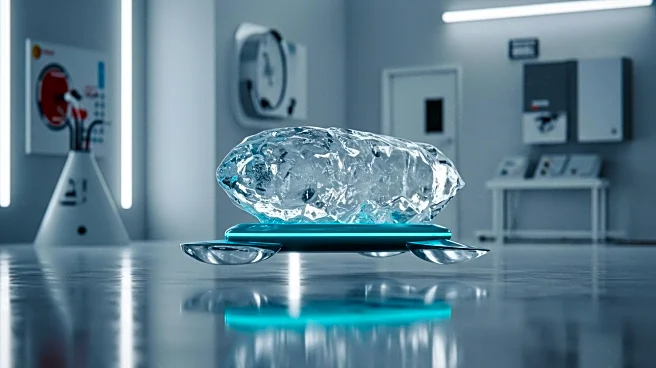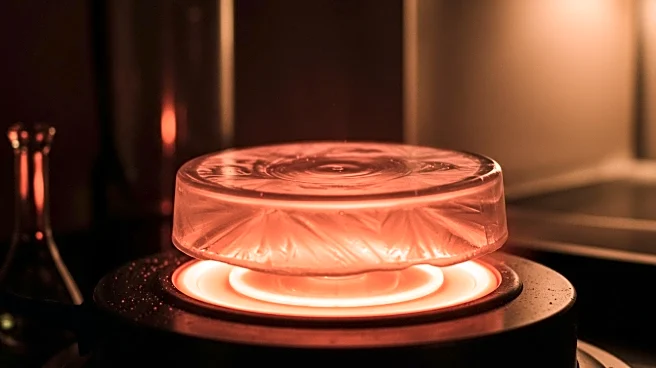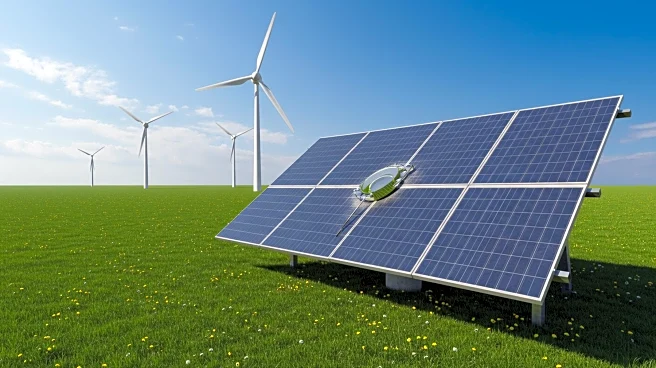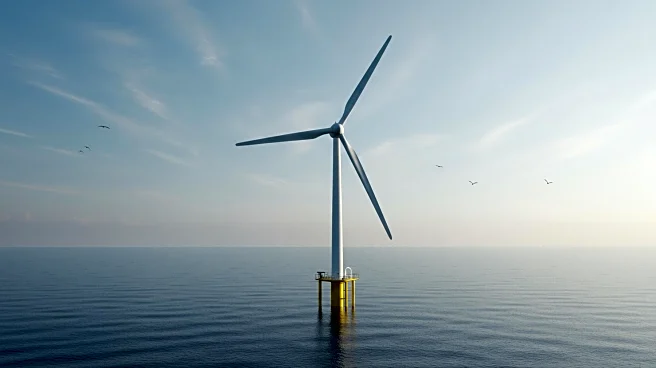Rapid Read • 7 min read
Scientists at Virginia Tech have engineered a method to make ice move autonomously on a specially designed metal surface. This innovation involves creating flat metal plates with V-shaped grooves that allow ice disks to slide without external force. Inspired by the natural phenomenon of 'sailing stones' in Desert Valley, the researchers have developed a system where ice disks move due to controlled melting and surface-guided motion. This breakthrough has potential applications in rapid defrosting and energy harvesting, as the moving ice could be used to generate power by attaching magnets or turbines.
AD
The development of self-propelled ice represents a significant advancement in green energy technology. By harnessing the natural movement of ice, this method could lead to new, sustainable ways to generate power without relying on traditional energy sources. The implications extend to anti-icing systems and self-cleaning surfaces, offering environmentally friendly solutions in various industries. This innovation could reduce energy consumption and carbon emissions, aligning with global efforts to combat climate change and promote sustainable practices.
Further research is needed to explore the full potential of this technology. The Virginia Tech team plans to investigate additional applications, such as integrating the self-propelled ice system into existing energy infrastructures. Potential collaborations with industries focused on renewable energy and environmental sustainability could accelerate the adoption of this technology. The researchers aim to refine the design for practical use, potentially leading to commercial applications in the near future.
This development highlights the growing trend of biomimicry in engineering, where natural processes inspire technological innovations. The ethical implications of using such technology for energy generation are positive, as it promotes a shift towards cleaner energy sources. Long-term, this could influence cultural attitudes towards energy consumption and environmental responsibility, encouraging more sustainable practices across various sectors.
AD
More Stories You Might Enjoy













